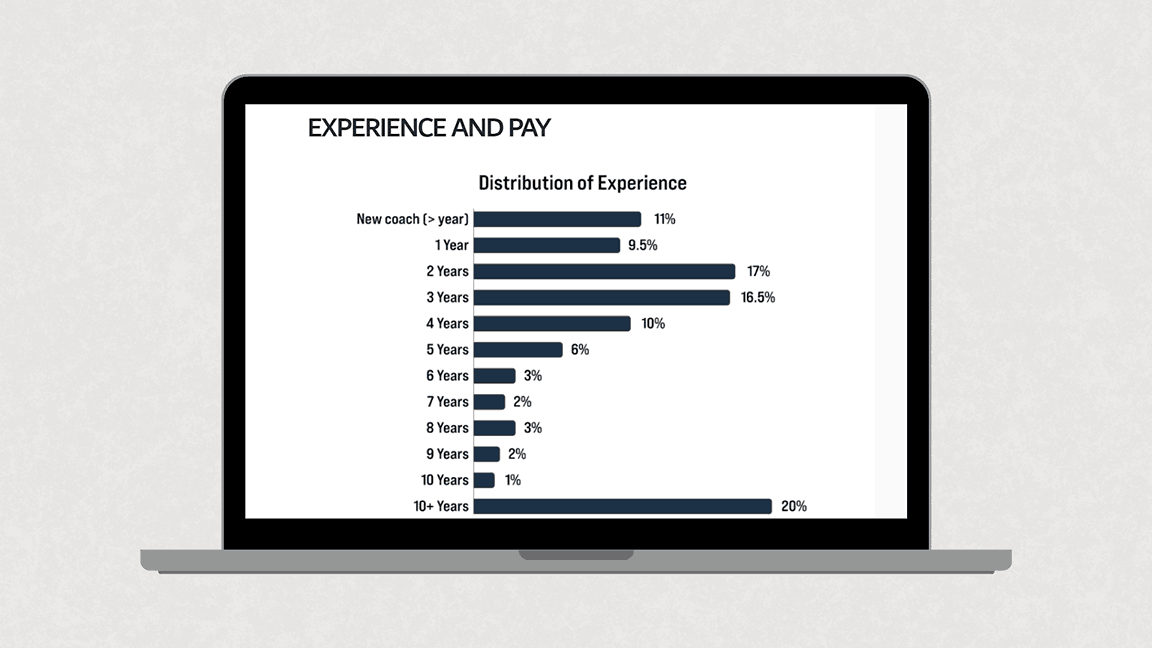Table of Contents
ToggleHere we go with round 2 of the 2024 Checklick Compensation Survey results.
In this post, we will shed more light on how compensation rates shake out when we isolate for experience, age, and qualifications. Combining this information with our previous post on overall compensation averages should give you some solid insight on general trends and pay structures.
Let’s get into it!
EXPERIENCE AND PAY
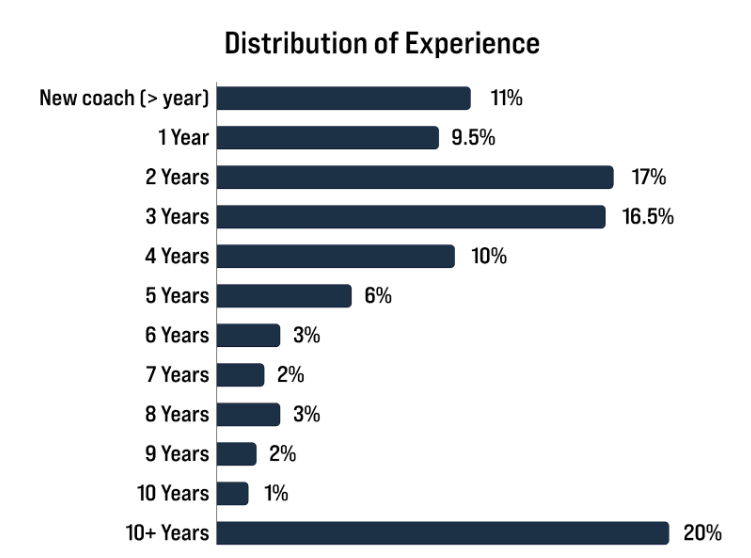
The above table shows the distribution of the years of experience among the survey population. It’s important to look at where the large populations are because this increases the validity and reliability of results from these groups. So the best data is coming from new coaches, 1 – 4 year, and 10+ year coaches. Groups like 7 – 10 year coaches are the least reliable data, please use these groups as a guide but not necessarily representative of those groups.
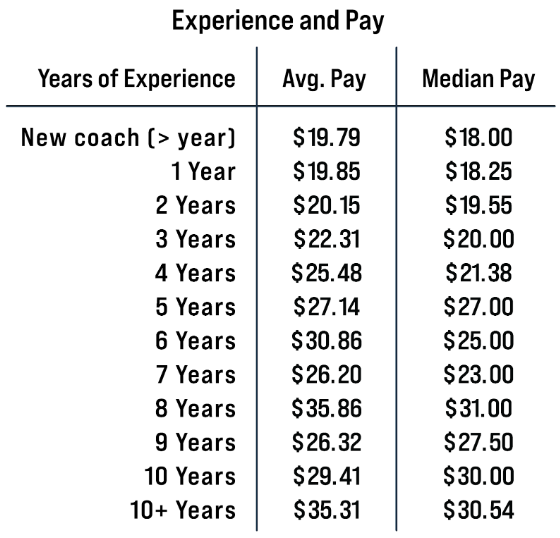
We added average pay and median pay on the chart to knock out some outliers that show up in the average pay. Both columns should be considered when developing your pay structure.
What do we see, pay generally increases with experience. In terms of rate of increase, there is not a consistent pattern based on the data we gathered from the survey. We see a large jump in pay at 3 years of experience. In the sailing world, this coincides with either level certification or a push to increase qualification, both of which may garner increased pay when negotiating salary. Remember, the reliability of the data really drops off from 6 – 10 years.
AGE AND PAY
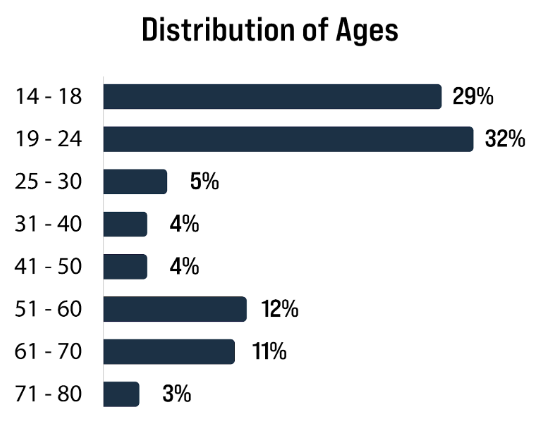
Again, here the most reliable data is from 14-18, 19- 24, 51-60, and 61-70 year olds. Also, interesting to note that the population of coaches out there are mostly under the age of 25. It’s interesting to see how this line of work begins to fade as youth become professionals. Treating coaching as a profession or even being paid as a professional seems to be an underdeveloped pathway. You can see this through the working years, 25 – 50, with more of our sample population returning to coaching between 51 – 70.
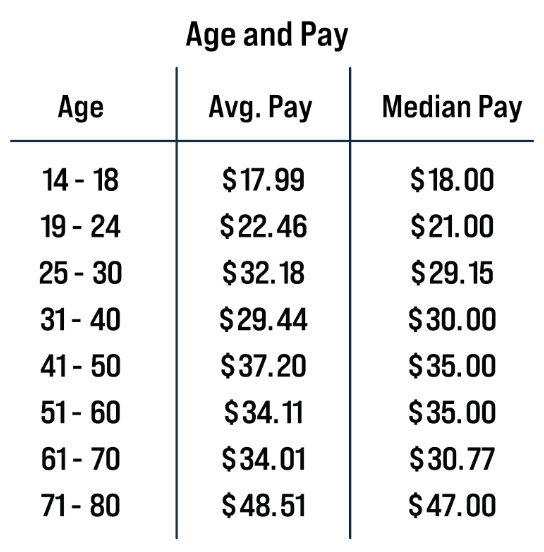
19 – 24 has a large pay jump that can be partially explained by that level certification/push to increase qualification. Usually, the older coaches are the more experienced ones who also likely have higher qualifications.
QUALIFICATION AND PAY
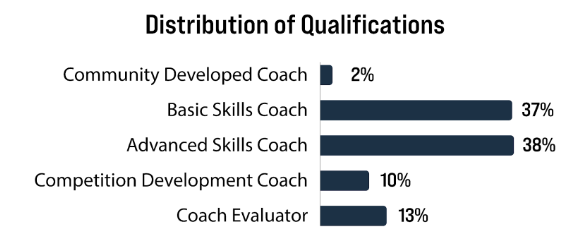
Basic and advanced coaches have the most reliable data, but competition development coaches coach evaluators can also be looked at as fairly reliable results. Basic and advanced coaches being the largest population makes sense from a camp and day program audience perspective. Usually, the largest contingent of staff are catered towards new entries and intermediates. There is less of an audience within the competitive streams which explains why there are less coaches reporting with that qualification. There just may not be enough jobs that require that level of training.
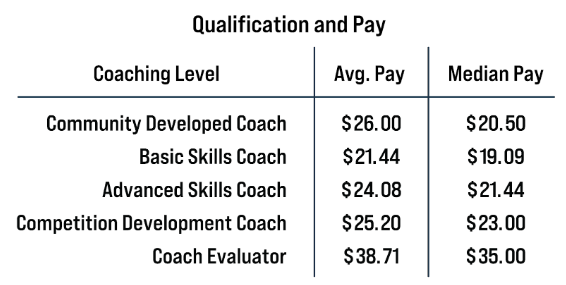
Community coaches being paid a higher rate may be due to these coaches working with higher level groups. These coaches tend to be community members with expertise and take on coach training to be covered by insurance.
Advanced coaches usually have at least 3 years of experience, which would put them at a minimum age of 19. When comparing pay along those metrics, it seems advanced coaches are showing more pay here based on qualification. This level is quite versatile which can explain the increased pay. Some coaches may take on increased responsibility by working with club teams which requires a higher level of qualification. Otherwise, on median pay, advanced instructors fall quite inline with coaches with 3 years of experience and 19- 24 years old.
CLOSING NOTES
We hope that this additional information can help you build out your pay structure for the next season by factoring in experience, age, and qualification.
In our next post, we will discuss some of the new data we collected this year – non-monetary compensation. We hope that this will give you another tool in the salary negotiation process.

